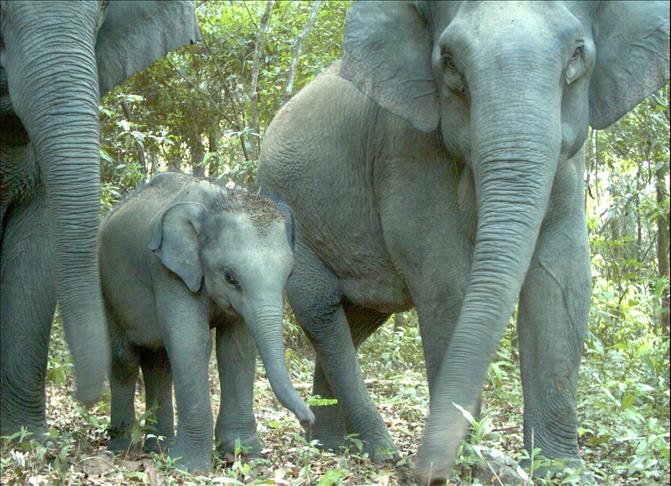
By Lauren Crothers
PHNOM PENH
The Cambodian arm of the World Wildlife Fund sought to highlight Monday the endangerment of 10 species in a protected forest area, calling for funding and support to ensure that the flora and fauna there can continue to survive.
The plea comes ahead of International Endangered Species Day on Friday, which highlights the plight of many at-risk and critically endangered species of wild animals.
WWF said in a statement that the Mondolkiri Protected Forest in the east of the country is “one of Asia’s last great wilderness areas," but warned that 25 species of flora and fauna have succumbed to endangered or critically endangered status in the wider region, while some have become fully extinct.
WWF said, for instance , that the banteng —a type of wild cattle— “has declined by more than 80 percent in the past 50 years and is now restricted to small populations in Cambodia and Java and Borneo.”
It said about 5,000 banteng live in the wild in Cambodia today, “meaning this landscape is critical to their survival.”
WWF Cambodia country director Chhith Sam Ath referred to the protected areas as a “jewel,” which supports “so many threatened species, such as Green Peafowl and Siamese Crocodile,” as well as local communities, and is a source of clean water and fresh air.
The Giant Ibis bird, Siamese Crocodile, Slender-billed Vulture, Eld’s Deer, Dipterocarpus alatus tree, Silvered langur, Masked finfoot, Elongated tortoise and tiger are all at risk of extinction, WWF said. The last wild tiger in Cambodia was spotted in 2007.
Plans to reintroduce tigers from India into the wild in Cambodia have been welcomed, but there are concerns that separate plans for a new border crossing in the area would thwart these.
“We hope by reintroducing tiger and promoting the landscape we can obtain high level international support and funding to mitigate some of the threats impacting the landscape’s endangered species such as wildlife trade and forest loss for agriculture,” Dr. Tom Gray, Director of Species Conservation for WWF-Greater Mekong, said in a statement.
“However, the key to ensuring a successful tiger reintroduction is to keep the landscape as intact and unfragmented as possible.”
Anadolu Agency website contains only a portion of the news stories offered to subscribers in the AA News Broadcasting System (HAS), and in summarized form. Please contact us for subscription options.

